Contest – Fan Friday – Week 2
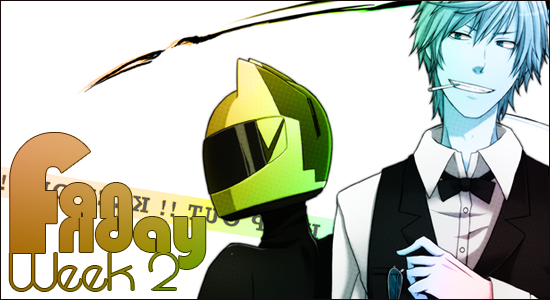
Is it that time of the week already? And no, I don’t mean the time EagleEyes comes home late at night half drunk and ready for Goofy Time. I mean Fan Friday Contest time.
Since I’m preparing for a convention right now I’m going to skip the witty bater and just get down to brass tacks: Nobody won because you were all terrible.
Okay, so Kana tells me I’m not allowed to do that. We voted, and our winner this week is Knuckles6K, who, after disappearing for several months decides to show back up when we’re giving stuff away. Like my ex girlfriend. Her entry can be viewed by finding some way to scroll the webpage down a few hundred pixels:

Luka wants to Just Be Friends, again, just like my ex girlfriend.
You’ve still got one more week to enter, so get on that before you lose your chance, then you’ll have to live with the disappointment of knowing that you missed out on the chance for me to actually pay attention to an e-mail that you send me.
Since everyone has to be special because Barney says so, here are the failures runners up:
But first, there are 6 billion people in the world, even if you’re one in a million, there are still 6,000 other people in the world exactly like you, tell that to your mom the next time she tells you you’re special;
-
What is Japan’s fascination with the Three Kingdoms?
Romance of the Three Kingdoms it is one of China’s classic novels along with Water Table, Dreams of Red Chamber and Journey to the west. So what do Chinese novels have to do with Japan well actually to be precise Japan’s production of films, video games, manga, and anime adaptation of Chinese classics is rivaled only by China. As you may or may not know China was important in the development of Japanese early state politics… but don’t worry I’m not here to talk to you guys in a boring history lesson I’m going to be talking about what is up with Japan’s fascination with the mighty Lu Bu, the splendid Ma Chao, and holy cow its Zhuge Liang.
Romance of the Three Kingdoms is a great piece of Chinese historical fiction by the great Lou Guanzhong who actually didn’t come up with the title nor the contents of his masterpiece he basically took various stories told about the great conflict of China during the late Han Dynasty (206 BCE- 220 CE) more importantly the later half of Han rule and the Era of Three Kingdoms (220-280 CE) of Wei, Wu, and Shu and their eventually overthrow by that of the Jin Dynasty. Romance of the Three Kingdoms was a great hit and despite its historical inaccurate the novel sold really well and became a classic of Chinese literature.
Lou Guanzhong who lived (1330-1400 CE) of course was not around to witness the Three Kingdoms nor was he around when Japan’s actual fascination started to occur. When the Japanese got a hold of the story it spread like wild fire and one could assume the volumes sold like Harry Potter or even Twilight series. This is where the craze began and unfortunately or fortunately this is where we begin.
The original Romance of the Three Kingdoms had 120 chapters and contained an odd total of over 9000…. Well I mean exactly 800,000 words. It was translated into English years later during the proxy-European imperialist carving of China. It was a hit in England and elsewhere, but if you compare it to the success in Korea, Japan, or even say Vietnam it doesn’t even hit a best seller in the West though it is still taught in Chinese and Asian History classes as I can vogue for.
The Japanese began a massive translation of Romance of the Three Kingdoms during the Edo Period like they did to all the great Chinese classics before this of course to read it the Japanese needed to understand Chinese. With these interesting translations and eventually abridging of the stories of the Three Kingdoms came the revival during the later Edo period of a romanticized yes… romanticized fad about the Romance of the Three Kingdoms get it? It peaked in popularity in Japan until Meiji Era and faded until after WW2.
Going back to the abridging and translated and even original Chinese novel the Japanese manga, anime and video game industry looked at this old Chinese piece of literature with dollar signs. All the characters, the armies, and the events these things could hold some profit for these new industries appearing in the fifties and still to this day. This of course with that became beginning of a commercial resurgence in the selling of Romance of the Three Kingdom.
There are a lot of these adaptations, but I will only give a list of the more familiar and more recent adaptations to this phenomena. The most obvious example of this is KOEI’s Dynasty Warrior, Kessen 2 (apparently unlike the other Kessen games this one was not based off Sengoku period, but instead Three Kingdoms Era) and Romance of the Three Kingdoms.
For me Dynasty Warriors was my first involvement with this part of Chinese history and though I confess I didn’t play any of these games until Dynasty Warriors 4 and I’m more found of the Samurai Warriors series I find the games enjoyable none the less. The game is a basic hack and slashes game where you play one of multiple characters from the Three Kingdom Era and bring wrath upon the battlefield. The original Dynasty Warriors was an arcade battle, but the other games are hack and slash strategy games. In fact Dynasty Warriors 7 recently came out and I must say it is a great game.
Dynasty Warriors 7 is like its predecessors, but focuses on the story of the eventually end of the Three Kingdoms Era when the Jin Dynasty becomes everyone master in the end. It also is more partial to the original novel than any other previous game of the series. It has new characters not just in the new instated army Jin, but as well in the three Kingdoms.
Anyone who has played knows how some characters can be quite difficult and none more powerful than the mighty Lu Bu. Lu Bu lived in a world where the great Han was collapsing and is a bit of a nuisance historically, as well in the novel and even more in the game. Considered the games ultimate character in the new game Lu Bu is just as beast as he as always been.
Koei’s other famous title from this theme of Three Kings is of course the aptly named Romance of the Three Kingdoms. Honestly I have never played the game, but apparently it plays similar to Koei’s Kessen however recently they have been released as MMORPG’s to my and others dismay. Kessen 2 also focuses on The Three Kingdoms Era while the other games focus on Sengoku Era Japan.
However video games are not the only adaptations of this great story. There are chinese manhou, Japanese manga, films, and anime about this wonderful story. (Don’t you love a milked out series that is everywhere.) A recent adaptation was Ikki Tousen where the souls of these dead warriors, warlords, and people have become re-incarnated into modern Japanese teens. The names are of course the translated Japanese names dating back to those Edo Era translations.
Interesting enough one of my favorite light novel authors Ryohgo Narita references Romance of the Three Kingdoms in his two most popular series Baccano and Durarara. Baccano’s reference to the Romance of the Three Kingdoms is aboard the Flying Pussyfoot when Issiac Dian talks to Jacuzzi about who the Train is like the Romance of the Three Kingdoms he of course is historically inaccurate and doesn’t have all the facts straight famously putting Billy the Kidd in the Era which of course a huge anachronism.
Ryohgo’s 2007 hit Durarara also loosely follows Romance of the Three Kingdoms and has loosely references to the novel. The Yellow Scarves or Yellow Turbans in history and in novel are a major antagonist. The Yellow Scarves of course along with those loyal to the Saika, and the Dollars form what could be at best a three kingdom power struggle, and like in the novel a fourth party comes to overtake them all. This could be either seen as the Blue Squares or even the plotting of Izaya Orihara.
One of the more interesting Japanese adaptations on this novel is the anime series and visual novel Koihime Muso where the characters are portrayed as females. Personally I think the commercialization of the series hits its low when the characters are treated as such, but it is was an interesting series non-the-less. The characters mostly just share relations as they do in the novel, but it for the most part has no historical significance to the novel besides the names of translated Japanese version.
In all the history of The Romance of the Three Kingdoms is a long one and if you ever have time find a copy at local library if you can or even dare to try to read some of the volumes of the Wade-Giles version of the novel and there are various abridged versions of the series and if reading isn’t your boat watch one of the dozens of anime or buy some of the manga about this series. It really has been told and retold so many times who cares if a few historical inaccurate are present. If you’re still not impressed pick up a copy of Dynasty Warriors or Romance of the Three Kingdom games and you too just like the Japanese will be entranced with this magical novel.
- Mitamaking
- Renku
- JinnRemona
- Drewid



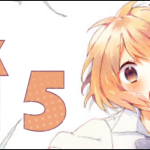
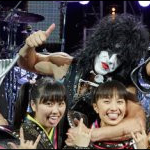
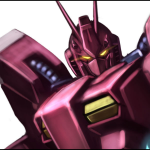
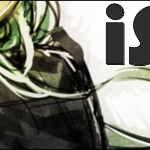









Congratz!
Congrats
😀 Congratz!
XD Lol Kibs.
Congrats to the next winner! You got skillzzzz, dawg. -3-